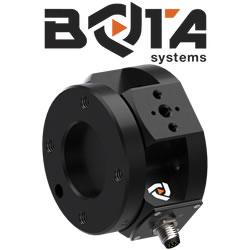EPRI Tests Confirm Viability of Using Drones to Assess Storm Damage on Distribution Systems
The Electric Power Research Institute (EPRI) has completed tests determining that unmanned aircraft systems, or drones, can be used effectively to assess storm damage on utility distribution systems.
The Electric Power Research Institute (EPRI) has completed tests determining that unmanned aircraft systems, or drones, can be used effectively to assess storm damage on utility distribution systems.
Conducted at the New Mexico State University Flight Test Center, the tests involved navigating several aircraft technologies and using high resolution video cameras to transmit images of power lines from a height of 5,000 to 7,000 feet. The tests determined that such images can be used by electric utilities to assess damage and pinpoint its location following a storm.
In the wake of a storm, damage assessment is frequently a choke point in power restoration due largely to obstacles, such as downed trees blocking roads or icy conditions that make it extremely difficult for utility crews to get to and report on distribution line damage.
\"Our research clearly shows that drones may provide utilities a tool that could reduce outage restoration time,\" said Matthew Olearczyk, senior program manager for distribution research at EPRI. \"Using live streaming video information, utility system operators would be able to dramatically improve damage assessment.\"
With more accurate and timely information, system operators can better dispatch crews, establish repair priorities, and communicate more timely and accurate information to their customers.
Researchers assessed several drone technologies, looking at aircraft performance, control systems, and payloads.
The tests indicated that unmanned airborne technologies equipped with sensors, cameras and global positioning systems (GPS) could be deployed quickly, allowing utilities to evaluate large areas more quickly than ground-based crews, then develop a repair strategy and mobilize repair crews more quickly and effectively.
EPRI will also be evaluating drones and remote sensing technologies for inspection and assessment of overhead transmission lines. As part of this research, functional requirements will be identified for UAV inspection and market surveys will identify available UAV inspection technologies, services, and their costs.
Other industries such as oil and gas, forestry, and meteorology are evaluating or using unmanned air vehicle technology.
About EPRI
The Electric Power Research Institute, Inc. (EPRI, www.epri.com) conducts research and development relating to the generation, delivery and use of electricity for the benefit of the public. An independent, nonprofit organization, EPRI brings together its scientists and engineers as well as experts from academia and industry to help address challenges in electricity, including reliability, efficiency, health, safety and the environment. EPRI's members represent more than 90 percent of the electricity generated and delivered in the United States, and international participation extends to 40 countries. EPRI's principal offices and laboratories are located in Palo Alto, Calif.; Charlotte, N.C.; Knoxville, Tenn.; and Lenox, Mass.
Featured Product

Bota Systems - The SensONE 6-axis force torque sensor for robots
Our Bota Systems force torque sensors, like the SensONE, are designed for collaborative and industrial robots. It enables human machine interaction, provides force, vision and inertia data and offers "plug and work" foll all platforms. The compact design is dustproof and water-resistant. The ISO 9409-1-50-4-M6 mounting flange makes integrating the SensONE sensor with robots extremely easy.
No adapter is needed, only fasteners! The SensONE sensor is a one of its kind product and the best solution for force feedback applications and collaborative robots at its price. The SensONE is available in two communication options and includes software integration with TwinCAT, ROS, LabVIEW and MATLAB®.
